Sean Jackson's 3D Mazes
Sean C. Jackson an artist based in New York, best known for his colourful, three-dimensional mazes. He’s been creating them since he was ten-years-old
Sean C. Jackson an artist based in New York, best known for his colourful, three-dimensional mazes. He’s been creating them since he was ten-years-old. Most of his mazes are inspired by urban landscapes, and getting lost amidst staircases, bridges and buildings can sometimes feel a bit like navigating the isolated streets and dead-end alleyways in Venice.
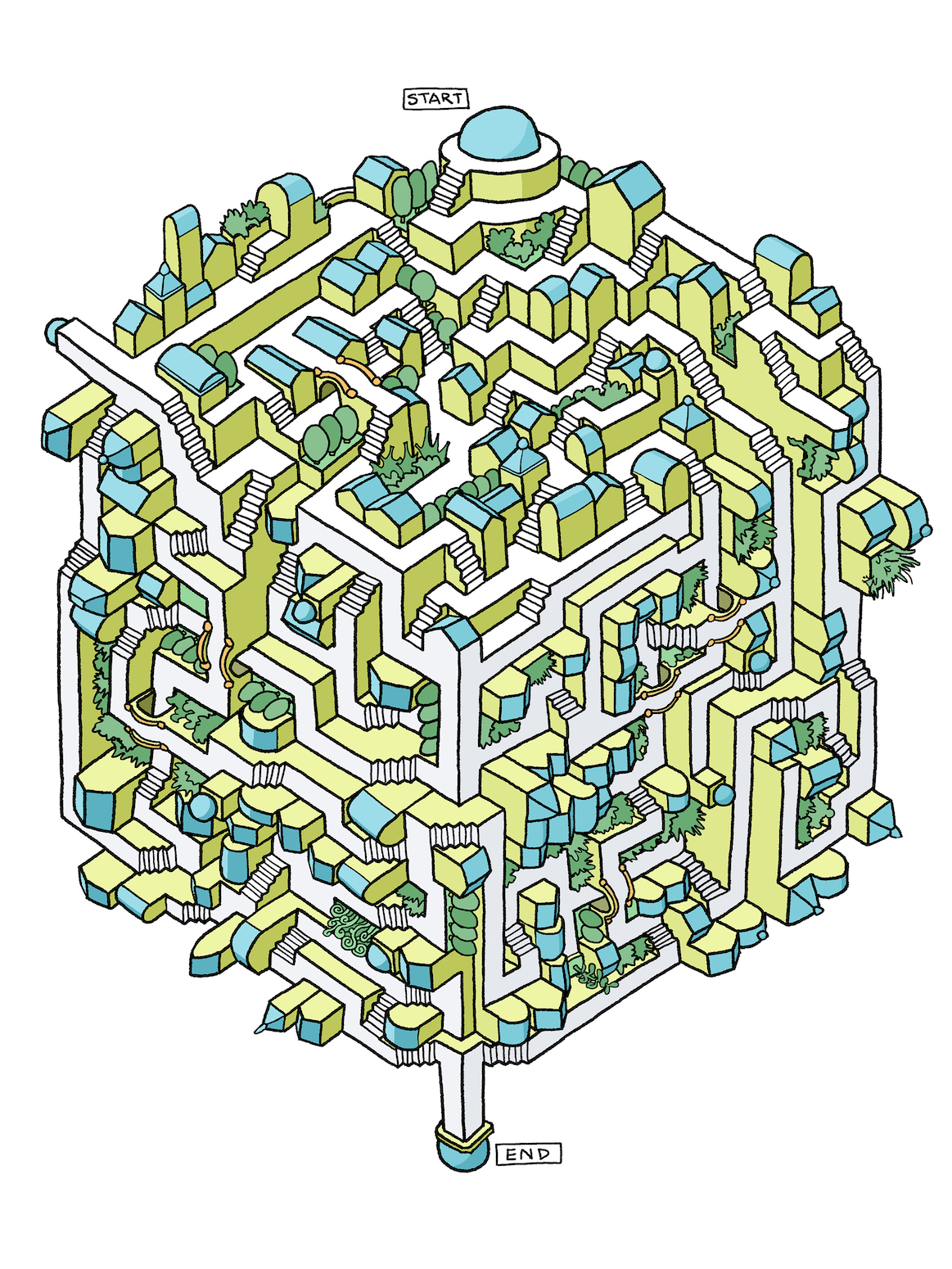
Could you talk us through your creative process?
In some ways the mazes are like a doodle. I like the way the buildings and steps fit together. I like the way the doodle grows around itself and across the page. Making a maze gives the doodle more purpose. Solving the final maze is fun for me, even if I created it.
I find the literal world of stairs and buildings more engaging than line mazes or labyrinths. I become lost in the landscape. It is transporting. The puzzle adds a purposefulness that a landscape painting or intricate drawing lacks.
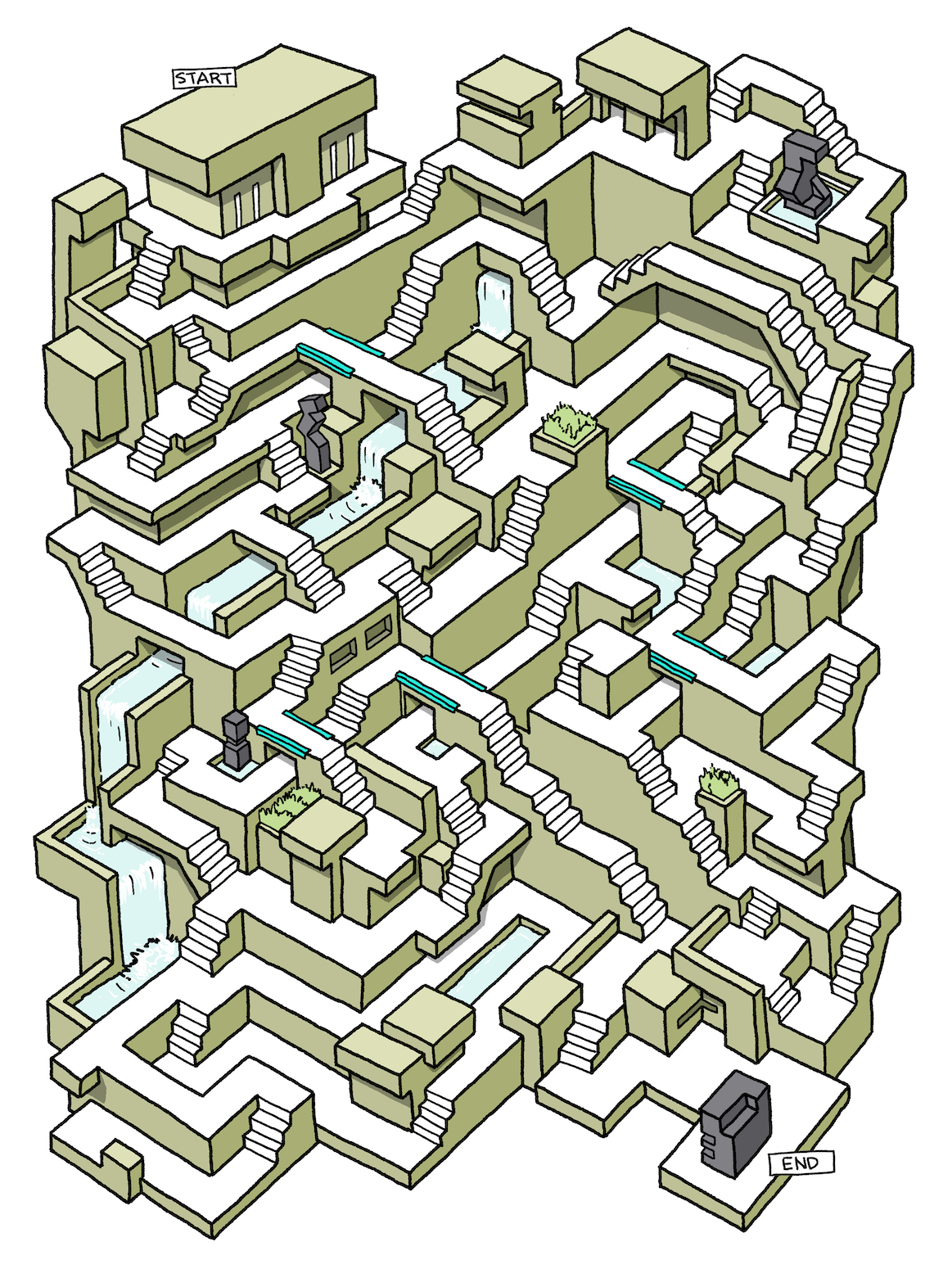
I find the literal world of stairs and buildings more engaging than line mazes or labyrinths. I become lost in the landscape. It is transporting.
Mazes, simple buildings, steps, and bridges also give me a vocabulary to explore different ideas as an artist. I can play with mediums, like ballpoint, oil paint, or linoleum print. I can play with subject matter; giant head sculptures, futuristic cities, non-western architecture, or rock formations. I can explore colour or pattern or light – all within this world that is my own.
Some Maze Rules:
Use natural, subdued colours. The brightest, most saturated colours are saved for the bridges so the viewer can recognize them, even from behind. The ink drawings themselves, dense high-contrast doodles of similar line-weight, can be visually overstimulating. The subdued colours help soothe that contrast.
Leave the path white so the puzzle is very clear.
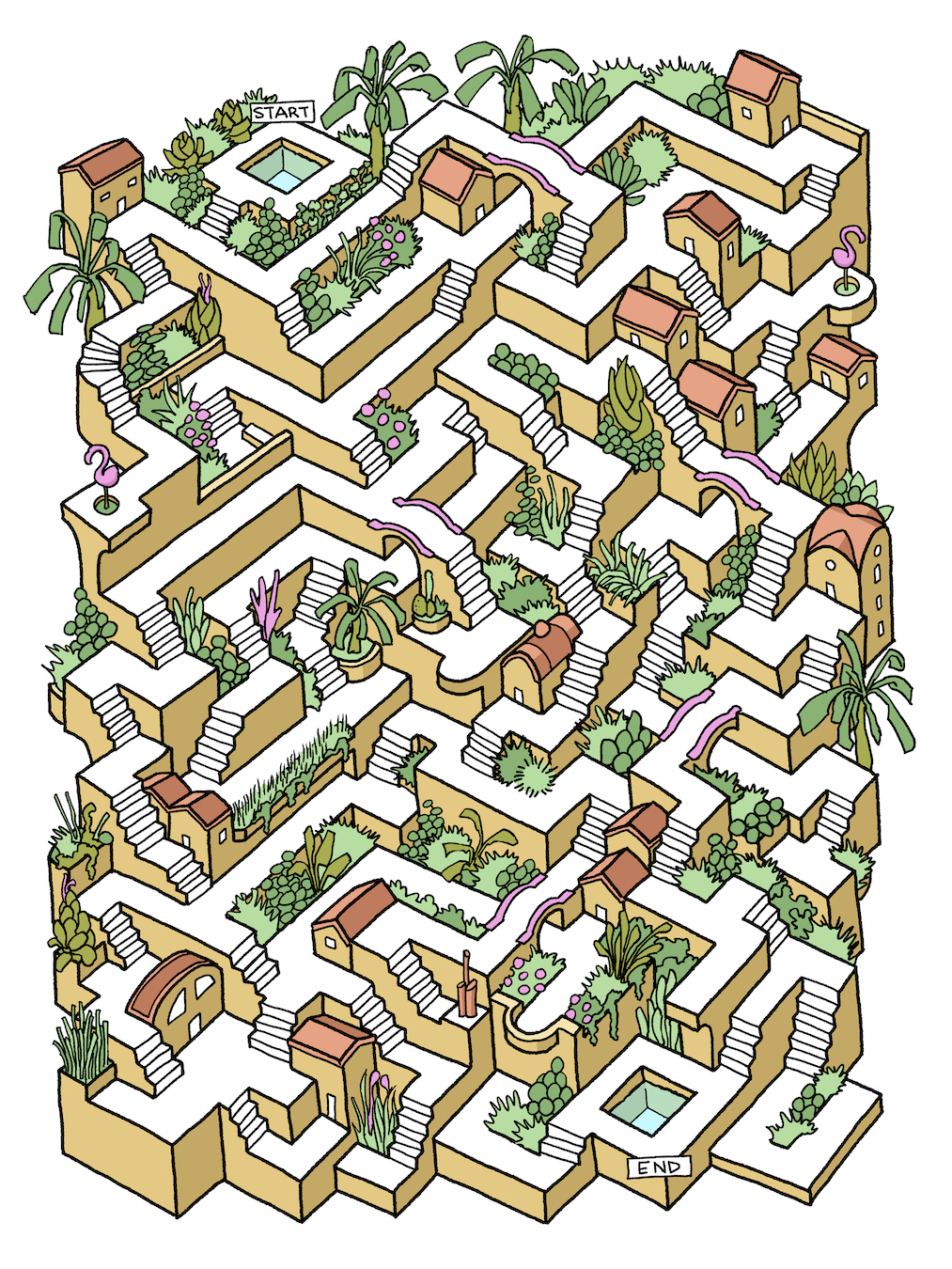
Both architecture and maze-making seem to involve a careful consideration of how a person moves through space (though on vastly different scales!) Do you see any other parallels?
The city and landscape style mazes invite the viewer into the space, encouraging them to imagine the world at the scale of the puzzle. When at this scale, the paths are revealed slowly, details discovered, dead-ends are surprising, solutions are rewarding.
For the viewer, being able to also see the overall maze at any time, like a map or a puzzle, reduces the frustration of a physical or virtual POV labyrinth. The illustration then draws the viewer back in. The play of jumping between the two mindsets, immersive and overview, is the joy found in my work.
This can be one of the joys of architecture. A functional space that is also beautiful. Structures that are sculptural from a distance or interiors that are mindful compositions. Visual clues or surprises as one moves through a space with purpose. The delight of being in two mindsets.
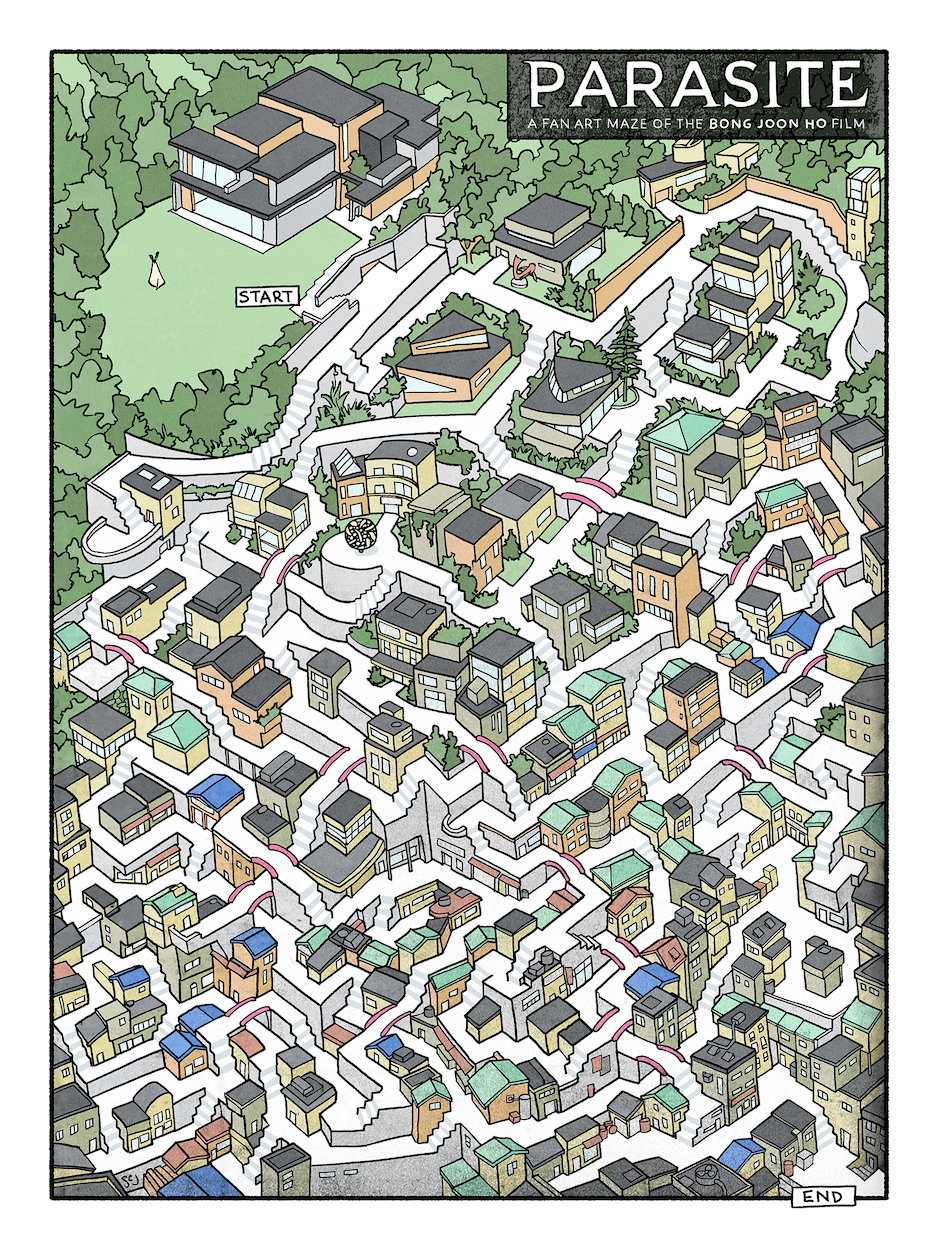
How do you come up with new ideas?
Anything that seems interesting is a good starting point for a maze. A photo of apartments built into a hillside will begin a rabbit-hole of sketching and internet searches. As I start playing with the shapes and fitting them together, I understand them better. What if the buildings have steep pitched roofs? Flat roofs? What if gardens or jungle? Only steps?
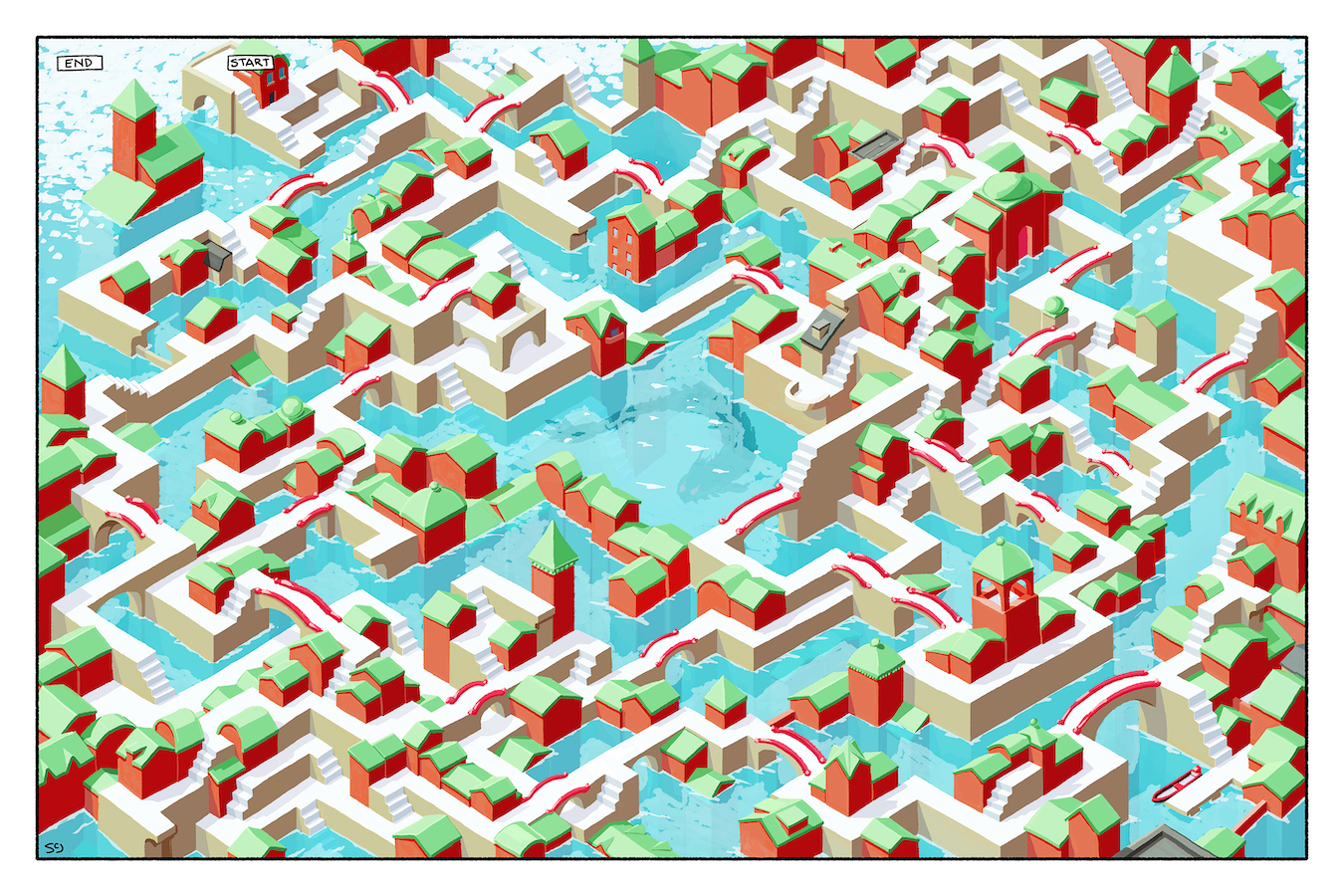
The play of jumping between the two mindsets, immersive and overview, is the joy found in my work.
Media can spark an idea, like recent mazes I made for the film Parasite or the video game Sea of Solitude. For Parasite, the family's journey from the wealthy home to their basement apartment during the rainstorm was a symbolic centrepiece in the film. Although the shots of staircases bordered by high walls may have been the initial spark, studying the home/set created for the film and researching different Seoul neighbourhoods laid the ground work for the idea of showing the gradual transition from wealth and privacy to density and struggle. Which turns out to also be a theme in the film.
The Sea of Solitude maze, I wanted to capture the beauty of the structures above water and tangible threat of the water surface. The discovery by the end was a 2-stage maze, first over the buildings and bridges, then returning across the surface. I used this format again for a later maze in one of my books.
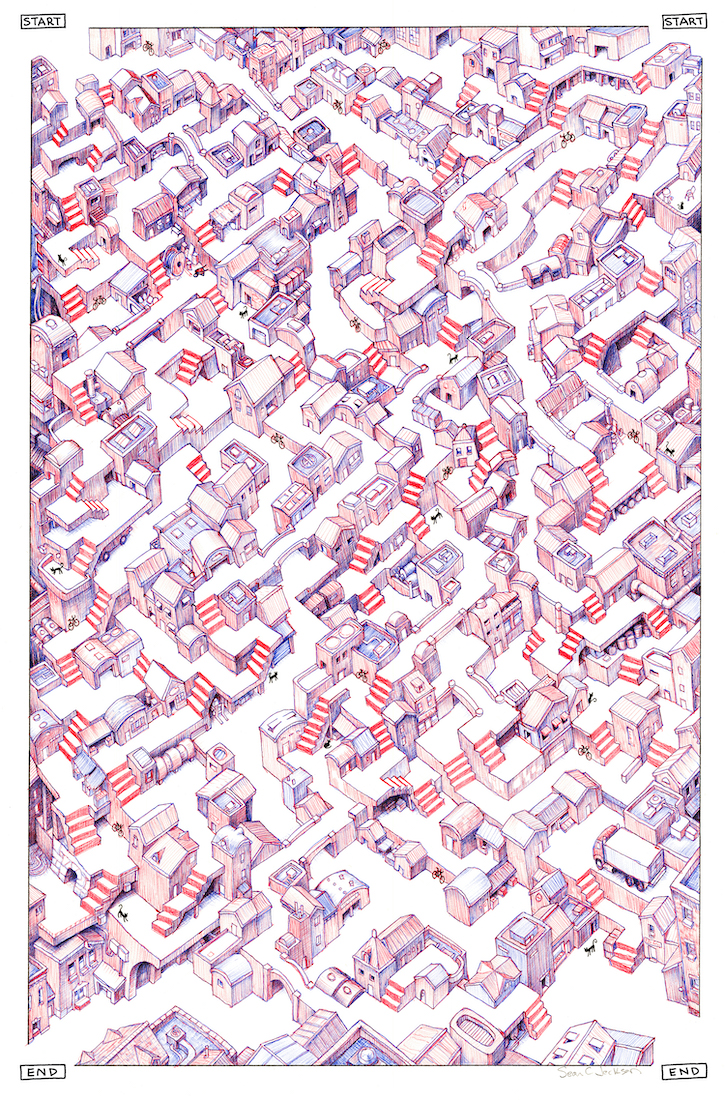
Other ideas are strictly technical. When discovering ballpoint pen artists, I started playing with that medium, which led to self-imposed rules: not sketching first, building up densities of colour and patience in hatching.
If I am totally stumped, I will review some “Draw This In Your Style” challenges on Instagram. When creating a maze version of another artist's work, I fill the backstory of their character with allusions in the structures and foliage.
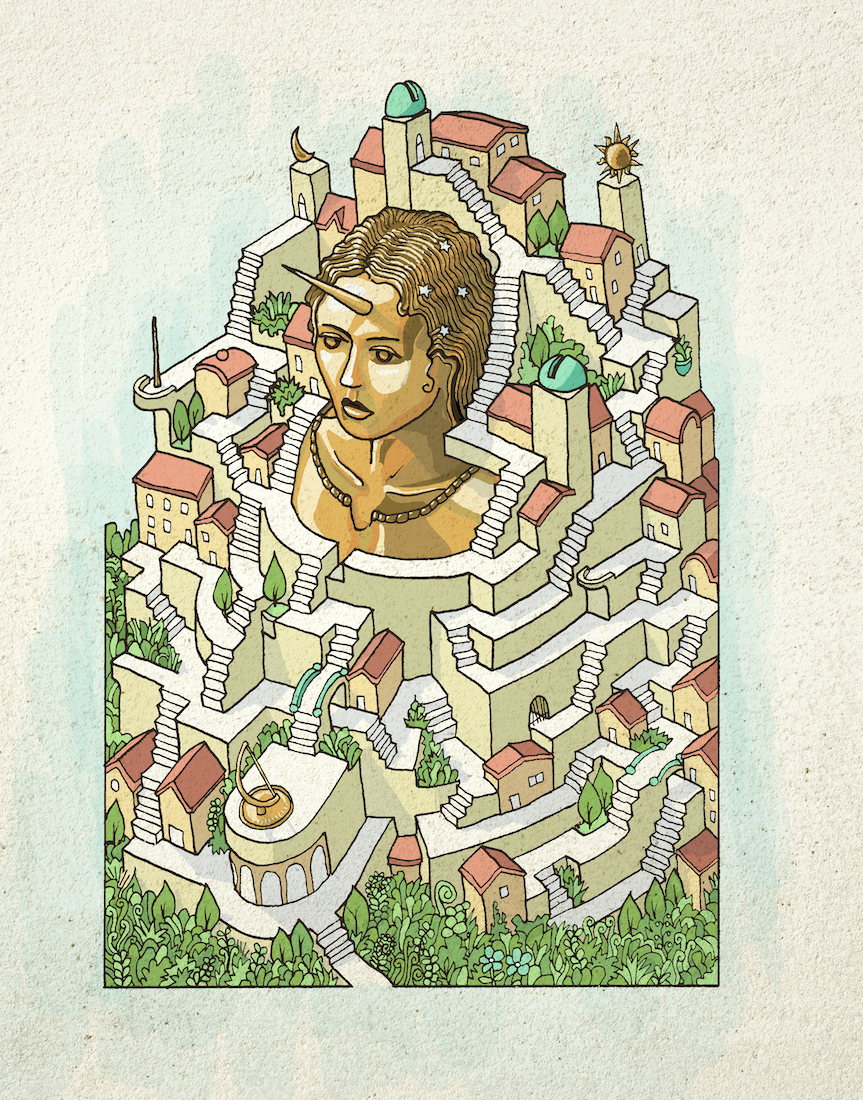
Is there anything you would say to your younger self about what you've learned so far about creativity?
Always keep drawing. Draw from life. Draw what you love. Study other artists by reading what they and others say about their work. Go to museums.
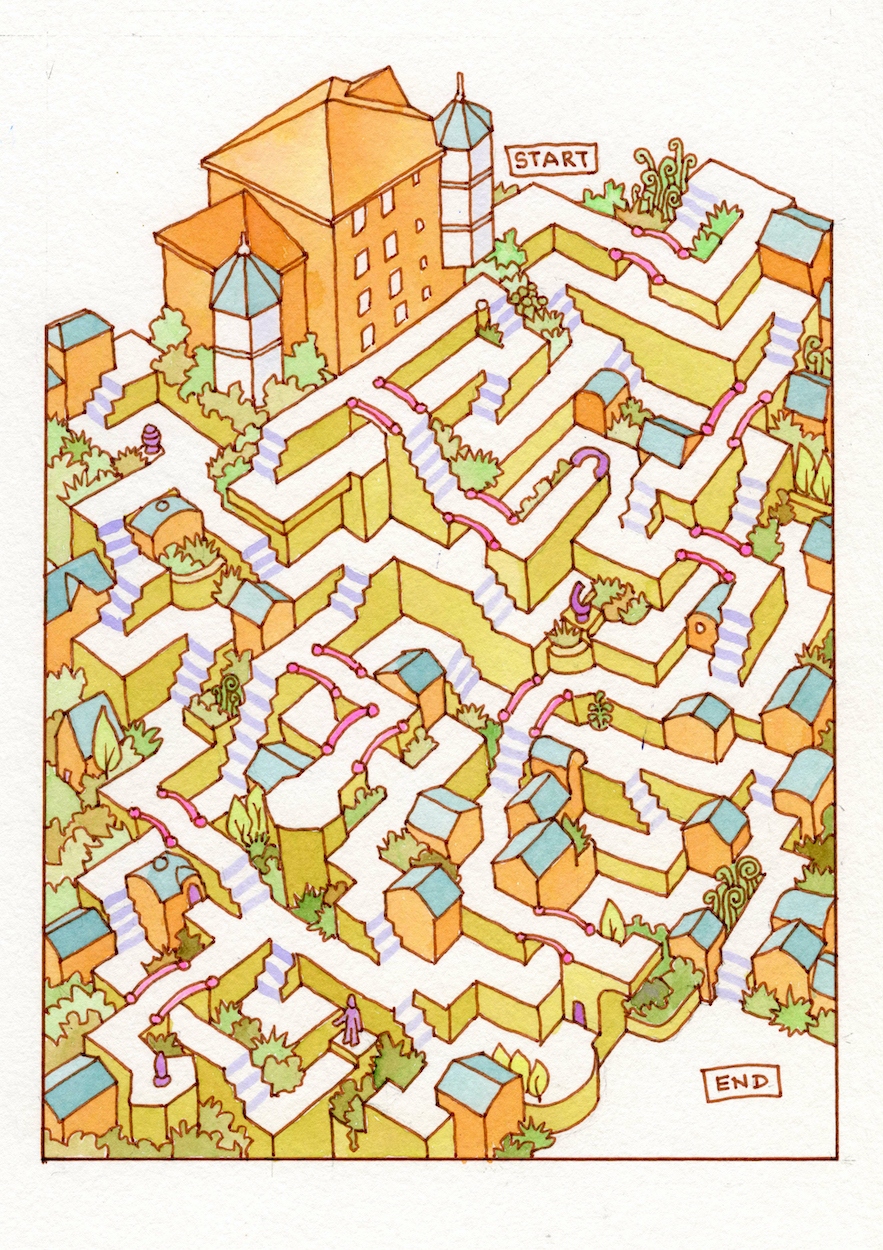
Star Wars Mazes is published in July 2021 by Chronicle, in partnership with Lucasfilm; the book contains 30 mazes inspired by iconic locations in the Star Wars universe. All the heroes, villains, aliens and droids make an appearance. Spaceships? Yes, spaceships.